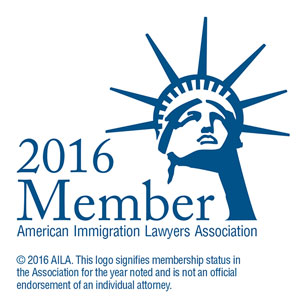California’s New Laws Protecting the Rights of Immigrants Are Civil Rights and Should Never Be Found to Be Unconstitutional
The Trump administration has ramped up its ire against California by filing a lawsuit against three different California laws that aims to protect immigrants from the harsh effects of federal enforcement. The three laws are the Immigrant Worker Protection Act, which regulates the way private employers can respond to federal efforts to investigate workplace immigration law compliance; the California Values Act, which limits communication from state and local law enforcement with federal immigration officials and prevents them from investigating people for immigration enforcement purposes; and A.B. 103, which subjects local detention facilities to twice-yearly inspections by the Attorney General’s office.
The lawsuit, United States of America v. California, claims that the California laws render it impossible for the federal government to deport people not born in the United States who live in California. It alleges that California has obstructed the United States’ ability to enforce laws that Congress has created, and that the California protections violate the constitutional principle that federal immigration law is the supreme law of the land. All three laws were signed during the Trump administration. Governor Brown signed the Immigration Worker Protection Act and the California Values Act in October 2017, and A.B. 103 in June 2017.The lawsuit, which also names Governor Brown and AG Becerra as defendant, calls for a declaration that the provisions are invalid, as well as preliminary and permanent injunctions. Under the preemption doctrine, when a state law obstructs or conflicts with federal law, the state law is invalidated.
Remarkably the Trump administration has relied on Arizona v. United States, a 2012 Supreme Court decision that held that Arizona had overstepped its limits by enacting immigration laws that penalized non-citizens that undermined federal immigration law. When the Obama administration launched this lawsuit against Arizona, it was criticized by Republicans as undermining state rights, and it is thus ironic that the Trump administration is relying on Arizona v. United States to attack the laws of California that are the opposite of Arizona’s, which are friendly towards immigrants.
While advocates in favor of more friendly immigration laws, including yours truly, cheered when the Supreme Court found most of Arizona’s laws preempted by federal immigration law, this is not a case of double standards when the same advocates are critical of the Trump administration’s latest lawsuit against California. Arizona’s SB 1070 truly conflicted with federal immigration law, according to the Supreme Court, and were contrary to the federal immigration scheme that was enacted by Congress. Those laws literally usurped federal immigration law. For instance, Section 3 of SB 1070 penalized non-citizens for failure to carry registration documents even though there was a similar comprehensive federal requirement to carry registration documents. Section 5(c) criminalized unauthorized immigrants who applied for work. The federal scheme criminalized only employers, but not the individual for unauthorized work, and thus 5(c) stood as an obstacle to the objectives of Congress. Section 6 allowed Arizona police officers to make warrantless arrests based on probable cause that a non-citizen was removable from the United States. This too was preempted because under the federal scheme being removable is not a criminal offense. Still, Arizona was a mixed decision. Section 2(B), the most controversial provision of SB 1070 known as the “show me your papers” law, was upheld. The Supreme Court held that 2(B) was not creating a new state immigration law unlike the other provisions that were found unconstitutional; it only allowed Arizona police officers to determine if someone was unlawfully present by inquiring about person’s status with DHS, and such communication and exchange of information had not been foreclosed by Congress.
Would California’s laws, even if friendly towards immigrants, be preempted under Arizona v. US? The fact that a state may pass an immigrant friendly law rather than a punitive law is not determinative in analyzing whether the law has been preempted if those laws still pose an obstacle to the enforcement of federal law or are in conflict with it.
Under the doctrine of preemption, which is based on the Supremacy Clause in the US Constitution, federal law preempts state law, even when the laws conflict. Thus, a federal court may require a state to stop certain behavior it believes interferes with, or is in conflict with, federal law. Notwithstanding the sweeping Constitutional mandate in favor federal laws being the supreme law of the country, states too possess sovereignty concurrent with the federal government. Therefore, the Intent of Congress is the key. When there is an express preemption provision in a federal statute, courts will identify the domain expressly preempted by that language.
When there is no express provision in a federal statute, a state law can also be impliedly preempted under field preemption or conflict preemption. Under field preemption, it must be demonstrated that the federal government has fully occupied the field it has chosen to regulate. In the case of conflict preemption, if there is a conflict between the state law and the federal law, it must be demonstrated that compliance with both federal and state law is a physical impossibility or that the state law stands as an obstacle to the purposes of Congress.
Relying on Arizona v. United States, the complaint in United States v. California claims that the United States has broad authority to establish immigration laws, the execution of which states cannot obstruct or discriminate against. The complaint further asserts that Congress has created laws that provide broad authority to the federal government to investigate, arrest, detain and remove non-citizens suspected to being or found to be unlawfully in the US. The complaint also states that consultation between the federal and state governments is an important feature of the immigration system, and thus a state may not prohibit its official from providing information to the DHS regarding the citizenship or immigration status of an individual. Finally, the complaint notes that Congress has enacted a comprehensive framework for combatting the employment of illegal aliens, and can penalize employers for not verifying the employment status of employees or for knowingly hiring unauthorized workers.
Although California will make extensive arguments in defending its laws, some preliminary observations can be made. The California laws have been enacted to protect the constitutional and civil rights of all people living in the state of California. While the federal government is authorized to enforce the immigration laws, there have been many instances of egregious abuses by ICE agents that violate the rights of California residents. California is not interfering in the enforcement federal immigration laws or usurping them like Arizona did, but is providing a constitutional baseline for federal agents when enforcing federal law. A state can pass laws with the objective of protecting its residents. Thus, in De Canas v. Bica, the Supreme Court held that a state law regulating non-citizens is not per se preempted as a regulation of federal immigration law, which is essentially a determination of who should or not be admitted in the country. States possess broad police powers to regulate the employment relationship and to protect workers within the state. Even if the California laws mildly frustrate federal authority, they only ensure that the civil rights of California residents subjected to heavy handed enforcement are protected. According to its website, the Civil Rights Enforcement Section in the California Attorney General’s office is committed to the strong and vigorous enforcement of federal and state civil rights laws. Thus, the California laws have been enacted to protect a legitimate state interest – the constitutional and civil rights of its residents – rather than to oust the federal government from enforcing immigration laws. Federal ICE agents are still free to enter California to enforce the immigration law in order to apprehend, detain and deport non-citizens who are not lawfully in the US.
The California Values Act prohibits state and local officials from providing information regarding a person’s release, unless there is a judicial warrant or a judicial probable cause determination or the individual has been convicted of certain felonies or other serious crimes. It is well within the constitutional rights of a state to refuse to provide such information. Pursuant to Printz v. United States, 521 U.S. 898 (1997), the federal government cannot commandeer states to enact or administer a federal regulatory program under the Tenth Amendment. In that case, sheriffs challenged the federal Brady Act, which required local sheriffs to conduct background checks for gun purchasers. Some sheriffs resisted because they objected to the federal regulation of firearms. Justice Antonin Scalia, writing for the majority, held that the sheriffs, as well as states, cannot be commandeered under federal law enforcement schemes with which they disagreed. Moreover, the underpinning behind the California Values Act is to keep communities safe by ensuring that local police can function effectively within the community by not betraying the trust of immigrants who may cooperate as crime victims. If local police were required to provide information regarding non-citizens, they would not be able combat crimes effectively.
The Immigrant Worker Protection Act prevents employers from voluntarily consenting to an immigration enforcement agent form entering the workplace or providing access to the employer’s records, unless the agent has a judicial warrant or consent is otherwise required by federal law. The law also requires employers to notify employees within 72 hours off receiving a notice of inspection. While the Trump administration argues that preventing an employer from voluntarily consenting to an agent from entering the workplace or providing records undermines the ability of enforcement agents from enforcing the employer sanctions provisions under the Immigration and Nationality Act, what the California law does is to again set a baseline that would protect the constitutional and civil rights of California workers. The law does not prevent the federal government from enforcing federal law, it only insists that agents obtain a judicial warrant and workers be provided notice. It is well settled that ICE needs a judicial warrant under the Fourth Amendment in order to enter a private place without consent. Although the Immigrant Worker Protection Act precludes an employer from providing voluntary consent, which may be viewed as interfering with the federal scheme, a judicial warrant could still be justified as the workers may not have consented to a federal agent entering the work place even if the employer may have.
Similarly, California’s AB 103 requiring state officials to review county, local or private locked detention facilities in which noncitizens are being detained is to ensure that the detention facilities meet the constitutional standards. There have been far too many cases of non-citizens being detained for purposes of civil proceedings being abused and mistreated. Again, AB 103’s motivation is not to prevent the detention of non-citizens but to ensure that their detention meets minimum constitutional standards.
Although Attorney General Sessions on behalf of the Trump administration believes that California’s laws ought to be preempted based on Arizona v. United States, they are essentially civil rights laws. A state may enact laws ensuring the civil rights of its residents, including non-citizens, whether legal or not. Civil rights flow from the US Constitution, as well as California’s Constitution, and they ought not to be preempted, especially in light of egregious abuses by ICE agents in enforcing federal immigration law. Ensuring civil rights to all is a bedrock American principle. Some believe that California may have gone too far, but it can be legitimately argued that a state law upholding civil rights should never be in conflict with a federal law or be an obstacle to federal immigration law enforcement. Civil rights must be adhered to by all government officials, including federal immigration authorities. The preemption doctrine cannot be invoked by federal authorities as an excuse for violating civil rights.




